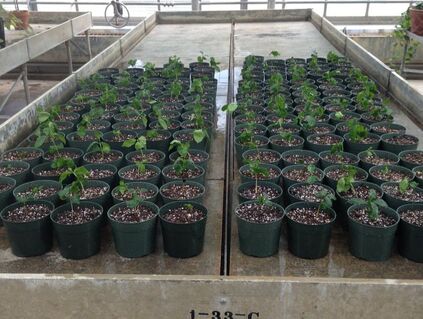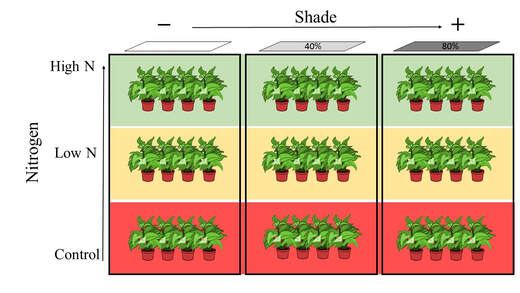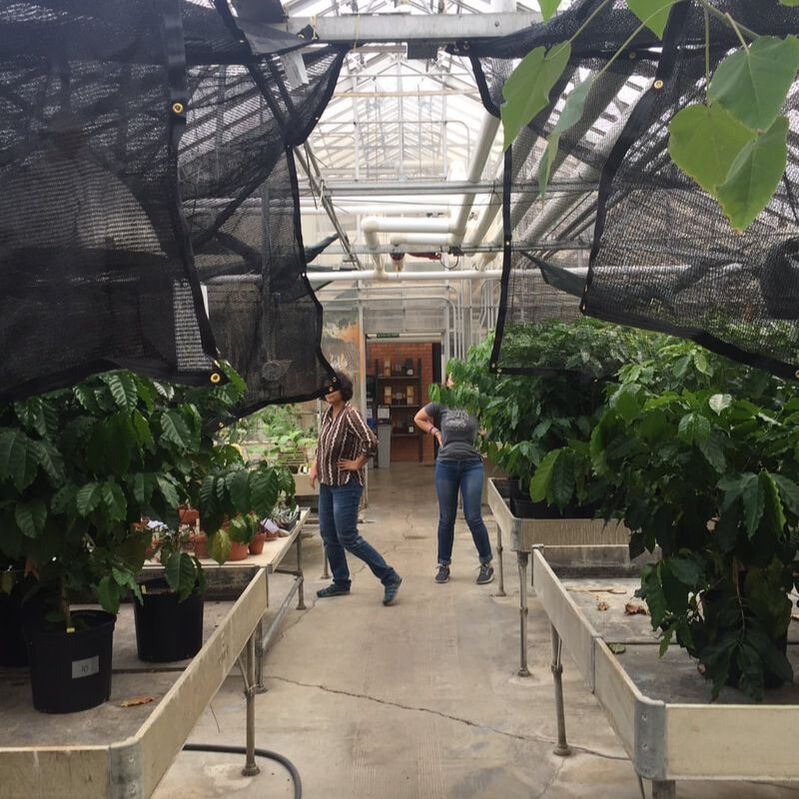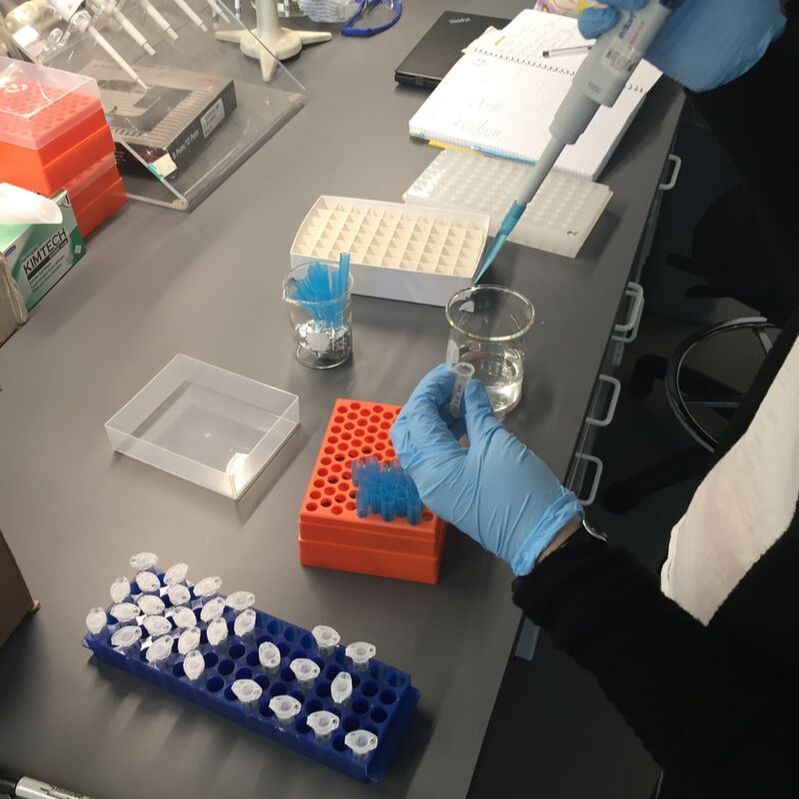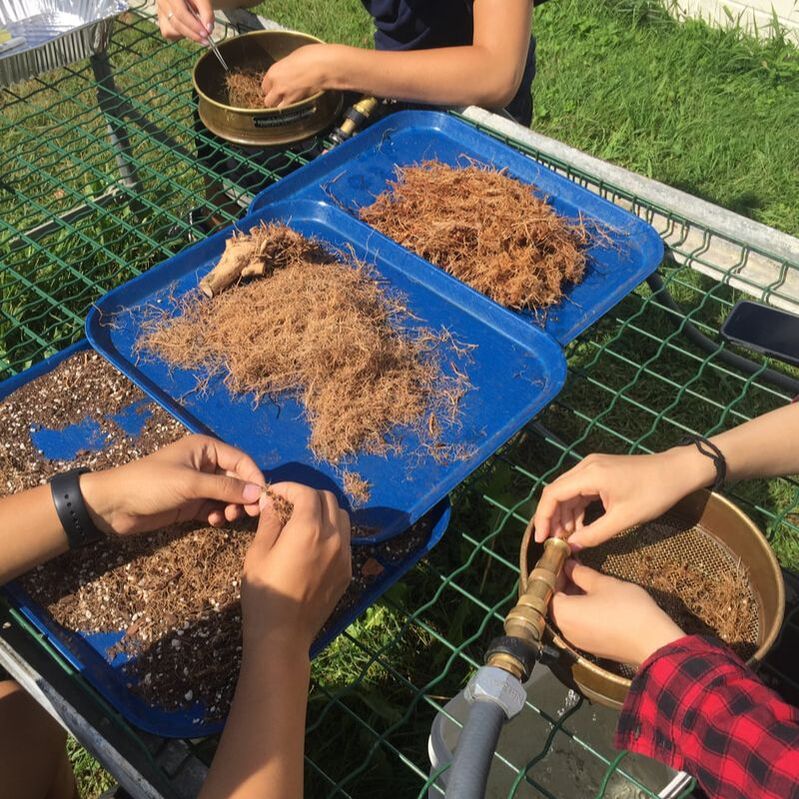|
With limited resources, there will be a trade-off between allocating to growth versus defense. I examined the effect of shade and nitrogen fertilizer on the production of caffeine, a secondary defensive compound, in Coffea arabica. I expected that plants with sufficient nitrogen would grow, unless light was limiting, in which case I would expect the plants to increase caffeine production. |
|
Methods Mature coffee plants were exposed to varying levels of light (full sun, 40% shade, 80% shade) and received high, low or no nitrogen fertilizer. Growth metrics were measured 6 times over 9 months; above and belowground biomass were measured at the end of the experiment. Caffeine in leaf samples taken at the same 6 time points as the growth metrics was measured using ultra-high performance liquid chromatography. |
Collaborators: Dr. Mark Hunter
Research assistants: Sandra Halperin, Alejandra Hernandes-Cortes, Luyao Li, Pia Lu
Research assistants: Sandra Halperin, Alejandra Hernandes-Cortes, Luyao Li, Pia Lu
